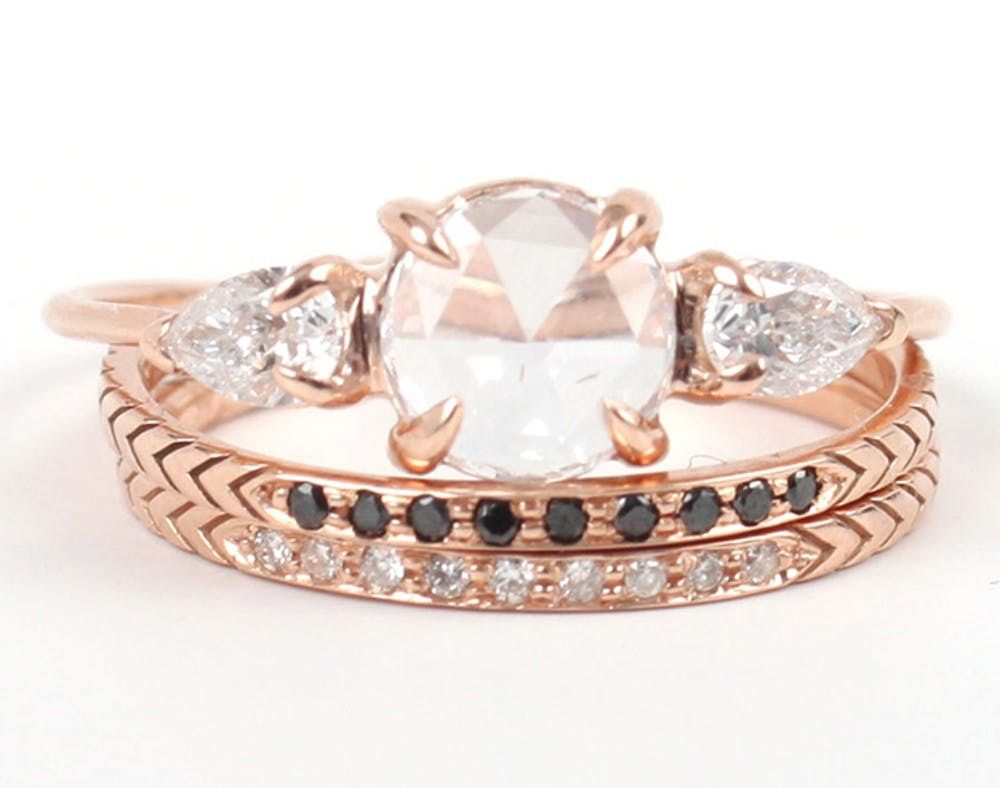When it comes to jewelry, we’re all about the glitter and shine, and diamond rings are no different. Whether you’re planning on going engagement ring shopping with your boo or you’re shopping for the ultimate #treatyoself gift, we’ve got the lowdown on everything you need to know about diamond shopping.
For the scoop on the Four Cs (cut, clarity, color and carat) and the best gems for a nontraditional engagement ring, we’re chatting with Lisa Bissell, the CEO of Pure Grown Diamonds, a site that lets you pick the perfect lab-grown (read: sustainable and guaranteed conflict-free!) diamond to make your dream ring. Lisa’s valuable info will make sure you’re rockin’ your new rock forever.
CUT
We asked Bissel how to know if a diamond is well cut, and she told us, “A well-cut diamond should have brilliance, scintillation and dispersion, which is flashes of white and other colors.” For most shapes, she says the light should enter from the top and reflect it back through the surface. “For marquise cuts, ovals, pears and emerald cuts, the actual shape is more of a matter of personal taste. There is no ‘ideal’ cut, unlike with round diamonds,” she says.
CLARITY
According to Bissell, you can tell just by looking at a diamond if it has good clarity or flaws. If the diamond’s inclusions are only visible under a microscope, you know it’s a good one.
COLOR
When it comes to color, diamonds are graded on a letter scale ranging from a top color of D (the absence of any traces of color other than white) to Z (a pale yellow). “Color grading is a visual measure of the presence of nitrogen, an element often found in diamonds,” Bissell explains. When you’re ring shopping, it’s important to ask where the diamond you’re looking at falls on the color grading scale. Any diamond with nitrogen can give hints of brown, gray or light yellow.
CARAT
Bigger isn’t always necessarily better — the bigger the diamond, the worse its clarity. Bissell says it’s up to everyone to decide what qualities they value most in their diamonds. “There is always a relationship between quality and price, but some consumers prefer size above any other characteristic of the diamond they purchase,” she says. To women who are shopping for those ginormous rocks, she issues a word of caution: “Some larger, very low clarity diamonds may be unstable and more susceptible to damage with normal wear and tear.”
Non-Traditional Engagement Rings
If you are looking for something a little different, Bissell suggests considering a unique setting choice, rather than going with a traditional solitaire setting. A halo setting, for example, features the diamond as the central stone, framed by smaller diamonds, while a bezel setting has a metal rim that encircles the diamond and extends a little past it.
Colored Diamond
If you’ve got your heart set on a colored stone, like a yellow, purple or the above champagne diamond, Bissell says the same standards apply. “Just be aware that colored diamonds are often highly sought after and priced accordingly,” she shares.
What does your dream diamond ring look like? Tell us in the comments!
(Images via Catbird)
